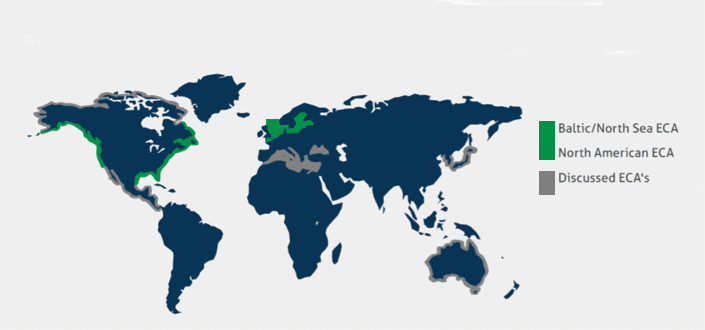LAST month a group of five non-government organisations, aka green lobby groups, came together to form an alliance to push for an emission control area in the Mediterranean Sea. It is not the first time the idea of an ECA in the Mediterranean has been muted, but mostly it has been to push for sulphur in fuel limits. This alliance wants to have the ECA restricted for SOx and NOx just as the north American ECA is, and the Baltic Sea ECA is set to become.
Will they be successful in their goals?
The argument is that if it can be done for Northern European, it can be done elsewhere in Europe. They also argue that the likely increase in global trade, when trade does start increasing again, will see more vessels sailing through the Mediterranean and therefore creating increased pollution.
The lobby groups also believe that increased cruise ship activity is a contributing factor to increased pollution from sulphur in fuel.
This fact has recently been echoed by residents in an area of New South Wales, in Australia. With pending increased cruise traffic during the tourist season, and proposed sulphur in fuel limitations in Sydney, they are pushing the government to extend the rules to all Australian ports. Couple this with Chinese efforts to build a series of sulphur EA regions and a pattern can be seen.
It is worth remembering that the current rules state that vessels in a designated emission control area need to use a marine fuel that has a sulphur content below 0.1% volume. Vessels in the rest of the world need to use a fuel with a sulphur content below 3.5%. but in a little over two and a half years’ time will need to use a fuel that has a sulphur content that is less than 0.5%. That was agreed at the IMO recently and points to an increased demand in low sulphur fuel alternatives.
In addition to this there is already a European regulation stating that ships in EU ports need to use an ultra low sulphur fuel, or scrubbers, and in EU waters all passenger ships need to use fuel with maximum 1.5% sulphur limit until the 2020 change when they will, like all ships outside an EA, need to switch to 0.5% fuels.
The issue for shipowners is that the cleaner fuel is more expensive. Exhaust gas scrubbers are an option to allow the cheaper fuel to be used, with the sulphur in the exhaust being cleaned out before the gases are emitted into the air. LNG fuel is also an option, but the retrofit capital costs are still prohibitive, although there are a growing number of newbuildings being ordered with dual fuel options.

NABU and BirdLife Malta officials together with Axel Friedrich, the independent air quality expert who conducted a study to support the lobby group’s claims a Mediterranean ECA is needed (Photo by BirdLife Malta, cover photos by NABU-Hapke-Prell)
So will a group of green lobby groups get their way?
The push by this alliance of green European lobby groups is, they claim, following a push by France at recent European Council working group meetings to push for a Mediterranean ECA.
NABU, a Germany/based member of the alliance, told Fathom in an email that a French environment ministry representative confirmed to the alliance at a recent conference last month that it was of interest politically in France.
Italy, according to the lobby group is also considering similar proposals.
While the lobby groups are pushing for a restriction of sulphur in fuel to 0.1% the problem is that any ECA proposition at the IMO must be from all countries whose territorial waters are in that body of water. So when the proposal for the Baltic Sea to be a sulphur ECA, which the Med lobby groups are citing as an example, was put forward at the IMO, it had the backing of all seven member states surrounding the Baltic. Hence the push by the lobby groups to “get more member states to step up to the plate”.
The Mediterranean has may more countries surrounding it, including a dozen non-European ones. Any bid to push for a Europe only ECA may simply push vessels to sail closer to the North African cost and out of EU waters.

NABU’s answer to this is that the alliance sees different possibilities to which geographical extent a Med ECA can be applied. “In principle we would like to see North African states joining and there are already respective talks underway,” NABU confirmed, but taking a more regional approach to the Mediterranean Sea is also an option for the lobby group alliance.
But does the European Union have the appetite to push for increased emission constraints on shipping at this moment? There are already the EU talks about including shipping in the region’s emission control area as a way to push for quicker action against shipping’s CO2 emissions, which has created friction between the IMO and EU and the ire of ship-owners associations who fear a two tier CO2 reporting and abatement system being created at the expense of ship operators.
A costly emission control area in southern Europe would likely be equally disliked, especially as there are still issues related to monitoring of compliance with current sulphur rules. But shipping would be foolish to write this proposal off as regional extravagance. ECA regions in Northern Europe and North America will hardly be rescinded, so the locations will only grow. It is likely that in time more ECAs (For sulphur and NOx emissions) will emerge to create an increased patchwork of regulations.
Fathom-News
editor@fathom-mi.com
































